At a glance
Iron deficiency often stems from dietary patterns or inadequate iron absorption, and low iron stores can lead to symptoms that can significantly impact day-to-day life. Recognizing early signs and understanding how to support iron intake through nourishing foods can help promote balanced iron levels and everyday comfort.
Iron deficiency is characterized by low serum iron levels and typically results from chronic blood loss, poor nutrition, or malabsorptive conditions.
Inadequate dietary iron intake can lead to anemia and related symptoms such as fatigue, cognitive dysfunction, and a discolored or unhealthy appearance.
Discover 15 signs you are iron deficient and learn about the best natural iron sources to prevent anemia and protect your health.
15 signs you are iron deficient
Iron is an essential trace mineral critical for various physiological processes, and a deficiency can significantly impact the body’s ability to function optimally.
Here are 15 signs of iron deficiency.
1. Chronic fatigue
Fatigue that isn’t alleviated with rest or sleep is one of the most common symptoms of iron deficiency.
Iron is vital for hemoglobin synthesis, the protein in red blood cells that carries oxygen throughout the body. Without enough oxygen, tissues and muscles become deprived, leading to fatigue.
2. Rapid breathing
Individuals with iron deficiency often have shortness of breath and a rapid breathing rate, likely due to the body attempting to increase oxygen levels in the blood. This symptom typically worsens with physical activity.
3. Low endurance
Inadequate iron levels can cause exercise intolerance, especially on inclines such as stairs and hills. With less oxygen reaching the muscles, their endurance and performance decline.
4. Poor memory
Iron is a critical nutrient for brain development, learning, and memory, which explains why low levels of this essential mineral can trigger brain fog and cognitive issues.
Additionally, chronic iron deficiency anemia has been linked to an increased risk of dementia and Alzheimer’s disease.
5. Heart palpitations
Those with iron deficiency anemia may experience heart palpitations or rapid heartbeat sensations. When the body lacks sufficient iron, the heart is forced to beat rapidly and pump more blood to transport oxygen throughout the body.
Consequently, chest pain may also occur due to the lack of oxygen in the heart. Additionally, due to the heart’s abnormal rhythm, untreated iron deficiency anemia may increase the risk of cardiovascular disease and heart failure.
6. Restless legs syndrome
Restless legs syndrome causes crawling sensations and an irresistible urge to move the legs, particularly at night or at rest, which may be due to dopaminergic abnormalities and iron insufficiency in the brain.
Though more research is needed, a study published in Movement Disorders found “Impressive relief from restless legs syndrome (RLS) symptoms provided by levodopa treatment and more lasting relief for patients receiving iron treatment.”1

7. Difficulty concentrating
Iron significantly impacts behavior and cognitive function, which might explain why those with a deficiency may display hyperactivity, behavioral issues, or an inability to concentrate.
A study published in Neuropsychiatric Disease and Treatment found that increased consumption of iron-rich foods improves concentration, attention, and intelligence in iron-deficient children.2
8. Dark circles under eyes
Iron deficiency is associated with dark circles under the eyes resulting from poorly oxygenated blood, which makes the eyes appear dull and drained of color.
Dark circles under the eyes can also appear in children who are weaned off breast milk and transitioned to cow’s milk and a high-carbohydrate diet, which increases the risk of iron deficiency.
9. Pallor
Pallor describes skin that is pale or dull due to low hemoglobin, which gives blood its color and the skin a healthy, warm hue. It can also affect the inside of the eyelids, causing them to appear white or yellow instead of pink or red.
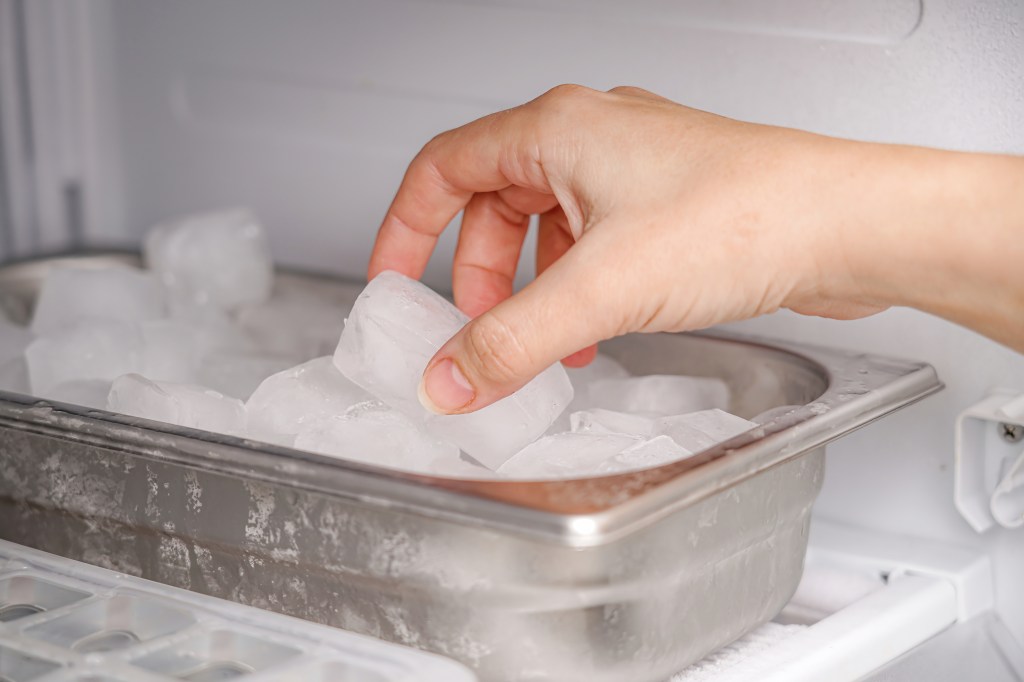
10. Pica
If you don’t have enough iron stores, you may experience strange cravings for non-nutritive substances, such as ice, clay, or dirt, a condition known as pica.
Chewing ice is most commonly associated with iron deficiency and iron deficiency anemia.
11. Dizziness
Iron deficiency anemia can lead to orthostatic hypotension, which causes blood to pool in the legs. This results in dizziness, particularly after standing up too quickly, due to a sudden drop in blood pressure.
12. Weakness
Many symptoms of iron deficiency anemia correlate to reduced oxygen capacity and low red blood cell count. This includes weakness, which results from a lack of hemoglobin and limits oxygen delivery to the tissues and muscles, leaving the body feeling weak and tired.
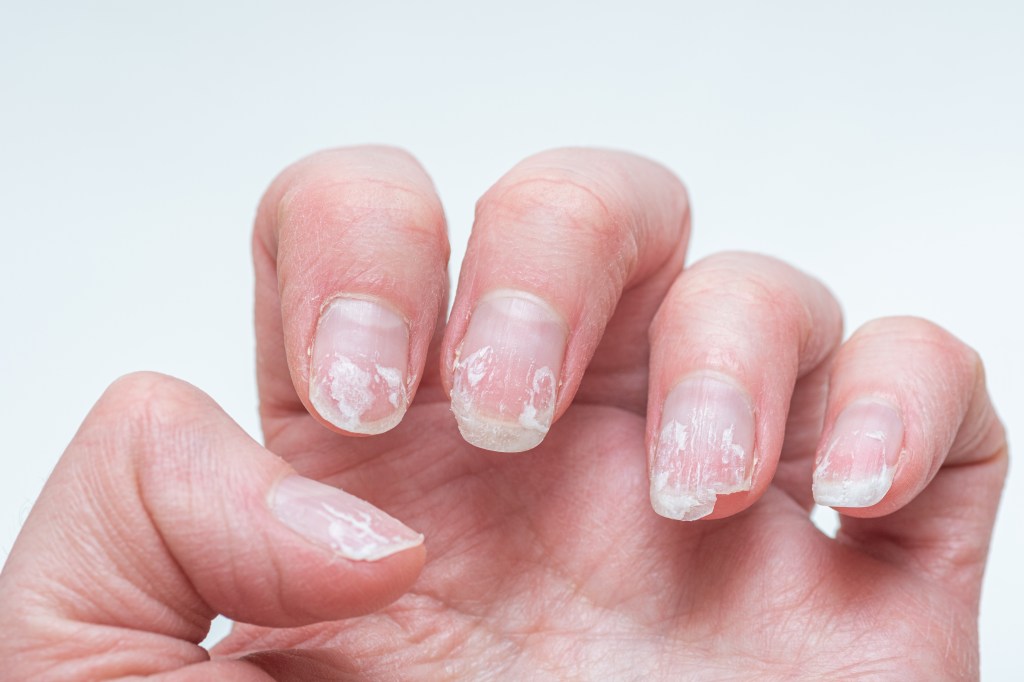
13. Brittle nails
Brittle nails that have grooves can also indicate iron deficiency.
Insufficient red blood cells reduce oxygen transportation to the nail beds, which affects keratin production. This hinders nail growth and makes nails prone to breakage, splitting, and other abnormalities, such as nail spooning.
14. Hair thinning and loss
Iron deficiency may also contribute to hair loss or thinning by depriving the scalp of optimal blood flow, oxygen, and nutrients that stimulate growth.
Evidence published in Advances in Hematology suggests that iron deficiency plays a role in pattern hair loss and alopecia, which affects hair follicles all over the body.3
15. Twitching
Additional symptoms of iron deficiency can include involuntary eye and muscle twitching.
Low iron impairs muscle function and deprives the tissues of adequate oxygen, which can cause spasms. Large muscles are often most affected, as they require significant amounts of blood to perform optimally.
Watch the video below to learn more about iron deficiency symptoms and causes.
Iron deficiency causes
Lack of iron is the most common nutritional deficiency in the United States, particularly affecting women, infants, and young children who are at higher risk.
Here are four potential causes and risk factors of iron deficiency.
1. Blood loss
Red blood cells contain iron, which are diminished when you lose blood faster than the body can replace it.
This explains why chronic blood loss from conditions such as ulcers, Crohn’s disease, hemorrhoids, or colorectal cancer can cause iron deficiency.
Additionally, women with irregular or heavy menstrual periods may develop iron deficiency anemia or low iron levels due to increased blood loss.
2. High-carb diet
A diet high in refined carbohydrates, legumes, nuts, and seeds can make it harder for the body to absorb iron. These foods contain high concentrations of phytates, a group of plant compounds that block mineral absorption in the gastrointestinal tract.
“Consuming a high-grain diet can quickly contribute to iron deficiency,” explains Dr. Berg. “This is why manufacturers fortify foods, such as cereals, rice, and bread, to prevent iron deficiency anemia in those who regularly consume their products.”
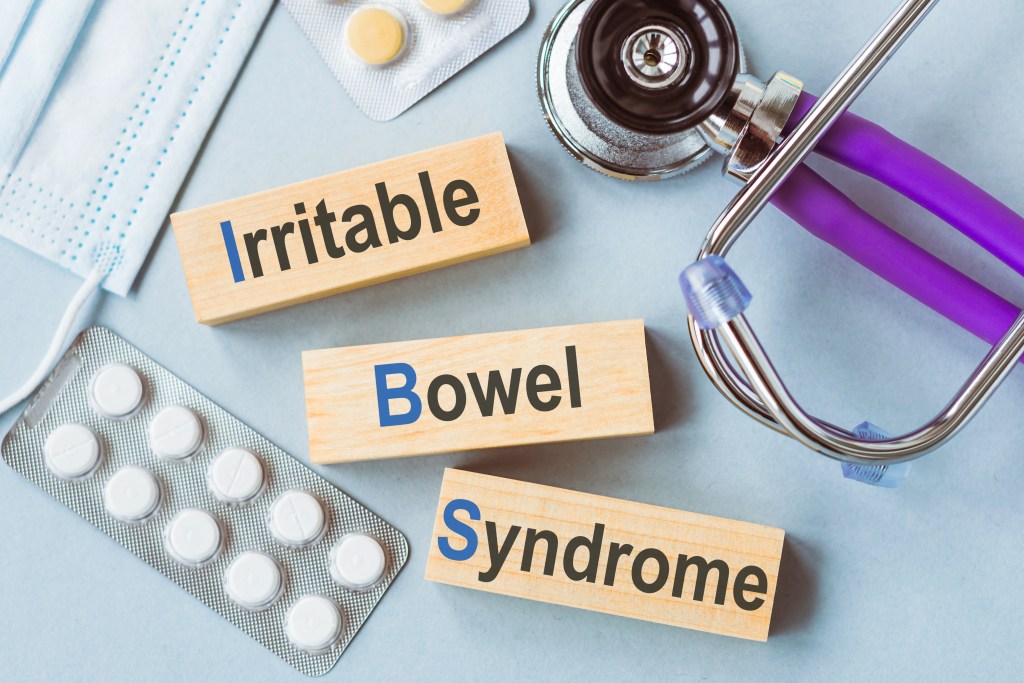
3. Malabsorption
Malabsorptive conditions such as irritable bowel syndrome (IBS) and Crohn’s disease may cause severe iron deficiency due to digestive difficulties, inflammation, and chronic blood loss through stool.
Poor mineral absorption due to low stomach acid or procedures such as gastric bypass surgery can also contribute to iron deficiency by preventing the proper absorption of iron from food.
How Claude improved his nutritional status with apple cider vinegar
Claude Montezin battled anemia-related fatigue and brain fog. When conventional approaches failed to raise his iron levels, Claude began taking apple cider vinegar and lemon juice to acidify his stomach.
Claude shares:
“I digest protein now, and my stomach is no longer upset. I’m no longer anemic! My energy is back up, and my mind is no longer foggy.”
Claude’s story highlights the importance of optimal digestion for nourishing the body and maintaining optimal nutrient stores. Read his full story here.
Results may vary based on individual factors such as starting point, goals, and personal effort. A holistic approach, including proper nutrition and lifestyle changes, is essential for achieving and maintaining health improvements. Individual outcomes aren’t guaranteed.
4. Vegetarianism or veganism
Diets that exclude animal products are linked to a significantly greater risk of iron deficiencies.
While various plant foods are sources of nonheme iron, this form of iron is less bioavailable than heme iron found in animal sources, meaning the body only absorbs small amounts.
Additionally, leafy green vegetables, such as spinach and Swiss chard, contain oxalates, which are naturally occurring plant compounds that bind to iron and reduce or block its absorption in the digestive tract.
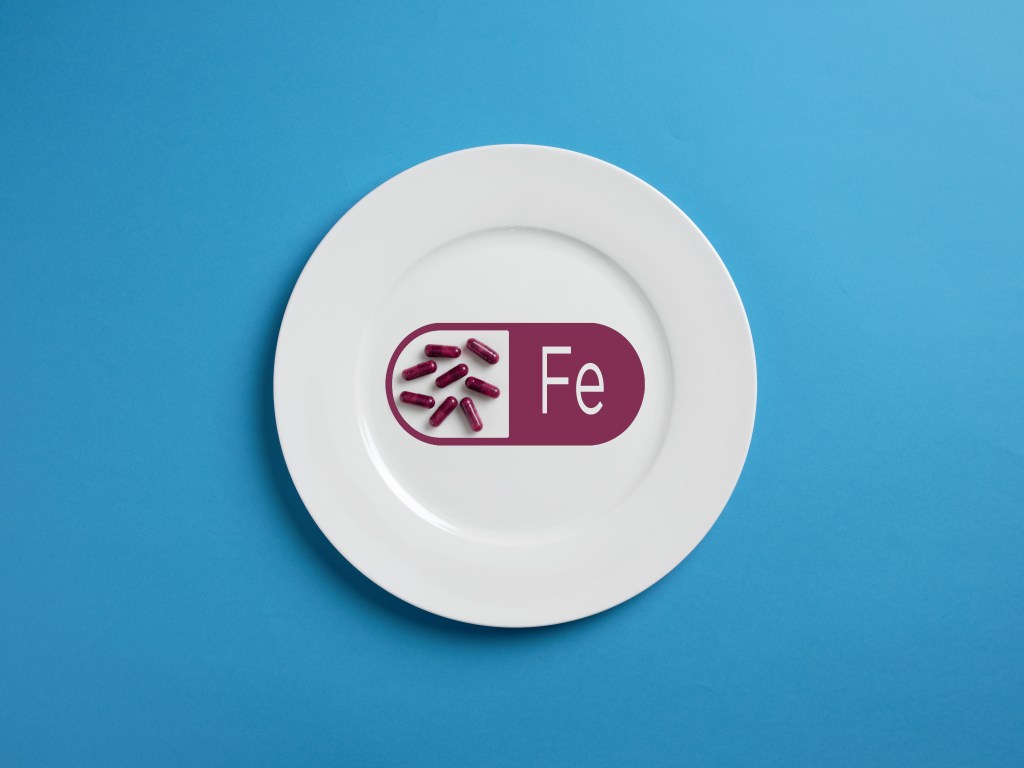
How much iron do you need?
Iron needs vary depending on age, sex, and certain life stages, such as growth and pregnancy.
The National Institutes of Health (NIH) set the recommended dietary allowance (RDA) for iron as follows:4
- Age 7 to 12 months: 11 mg
- Age 1 to 3: 7 mg
- Age 4 to 8: 10 mg
- Age 9 to 13: 8 mg
- Age 14 to 18: 11 mg (males), 15 mg (females)
- Age 19 to 50: 8 mg (males), 18 mg (females)
- Over age 51: 8 mg
Pregnant women aged 14 to 50 require 27 mg daily, while breastfeeding mothers should aim for 10 mg to support infant growth and personal nutritional needs.
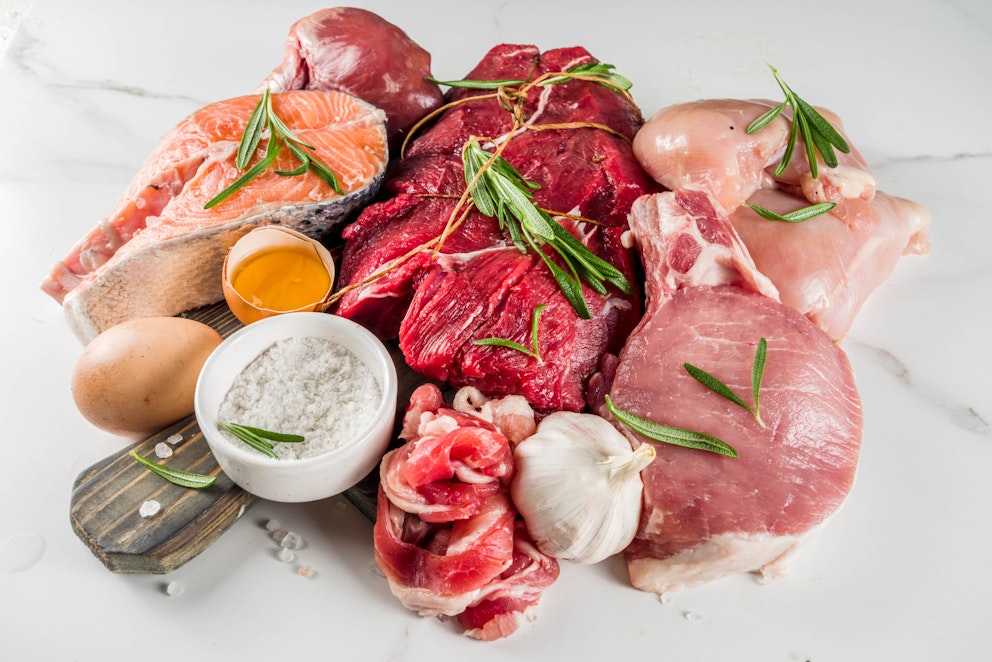
The best sources of iron
Iron is an essential nutrient, which means the body doesn’t make it and requires sufficient dietary intake to maintain optimal body stores.
Some of the best dietary iron sources include:
- Clams
- Oysters
- Red meat
- Fatty fish
- Eggs
- Liver and other organ meats
- Mussels
- Octopus
Additionally, consuming iron-rich foods with dietary sources of vitamin C, such as berries, lemons, bell peppers, and dark green leafy vegetables, can help replenish body stores by enhancing iron absorption in the gastrointestinal tract.
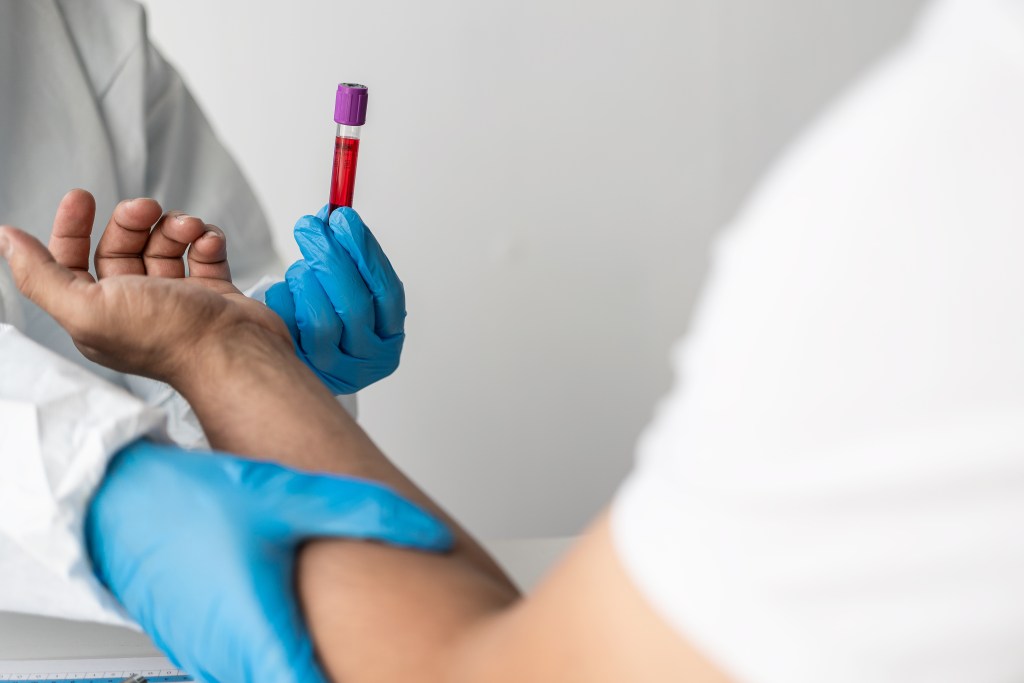
When to talk to your doctor
Information related to iron deficiency anemia should be discussed with a healthcare provider to determine suitability based on individual health needs.
Your doctor can diagnose iron deficiency or iron-deficiency anemia with a physical exam and blood test that evaluates complete blood count (CBC), hemoglobin, blood iron, and ferritin levels.
It’s vital to avoid self-diagnosis, as iron deficiency can share symptoms with other conditions or nutrient insufficiencies.
Increasing iron intake when your levels are normal increases the risk of toxicity and may cause iron to accumulate, which can lead to organ damage and inflammation.
Symptoms of iron overload include vomiting, gastrointestinal issues, bleeding, and, in severe cases, liver damage or organ failure.
Key takeaways
- Iron deficiency can result from blood loss, malabsorption, poor dietary habits, or diets that exclude animal products.
- Common symptoms include hair thinning, dark circles under the eyes, pale skin, brittle nails, shortness of breath, reduced exercise tolerance, restless legs syndrome, pica, poor cognitive function, and muscle twitching.
- Prioritizing bioavailable iron sources such as red meat, seafood, organ meats, and eggs, paired with vitamin-C-rich foods, can help support healthy iron levels.
- Iron needs vary by age, sex, and life stage, with higher requirements during pregnancy and periods of rapid growth.
- Anyone who suspects iron deficiency should consult a healthcare provider for a proper diagnosis and guidance.
FAQ
1. What are the signs you are iron deficient?
Signs of iron deficiency include chronic fatigue, low endurance, breathlessness, and restless legs syndrome. Dark circles under the eyes, pale skin, pica, brittle nails, and hair thinning are also symptoms of iron-deficiency anemia.
2. What is iron-deficiency anemia?
Iron deficiency anemia is the most common type of anemia, characterized by low red blood cell count due to insufficient iron levels. Its symptoms include fatigue, breathlessness, and chest pain.
3. What do you crave when your iron is low?
Those who are low in iron may experience pica, a condition that leads to cravings for non-nutritive substances such as ice, dirt, or clay.
Some individuals with iron deficiency also crave red meat or other animal products, as the body instinctively seeks sources of heme iron, which is more easily absorbed.
4. What causes iron levels to drop?
Low iron intake, chronic blood loss from heavy periods, ulcers, or hemorrhoids, and a plant-based or high-carb diet can cause iron levels to drop.
Additionally, malabsorptive conditions, such as celiac disease or inflammatory bowel disease, can contribute to severe iron deficiency anemia.
5. How can I increase my iron levels quickly?
Eating animal-based, iron-rich foods is the best way to support healthy iron levels. These include red meat, organ meats, eggs, fatty fish, and seafood such as clams, oysters, and octopus.
Though plants contain nonheme iron, it’s less bioavailable than iron found in animal sources.
6. How is iron deficiency anemia diagnosed?
Iron deficiency anemia is typically diagnosed with a physical exam and blood test measuring complete blood count (CBC), hemoglobin, blood iron, and ferritin levels.
Sources
- https://pubmed.ncbi.nlm.nih.gov/17566122/ ?
- https://pmc.ncbi.nlm.nih.gov/articles/PMC4235202/ ?
- https://pmc.ncbi.nlm.nih.gov/articles/PMC7471793/ ?
- https://ods.od.nih.gov/factsheets/Iron-HealthProfessional/ ?












